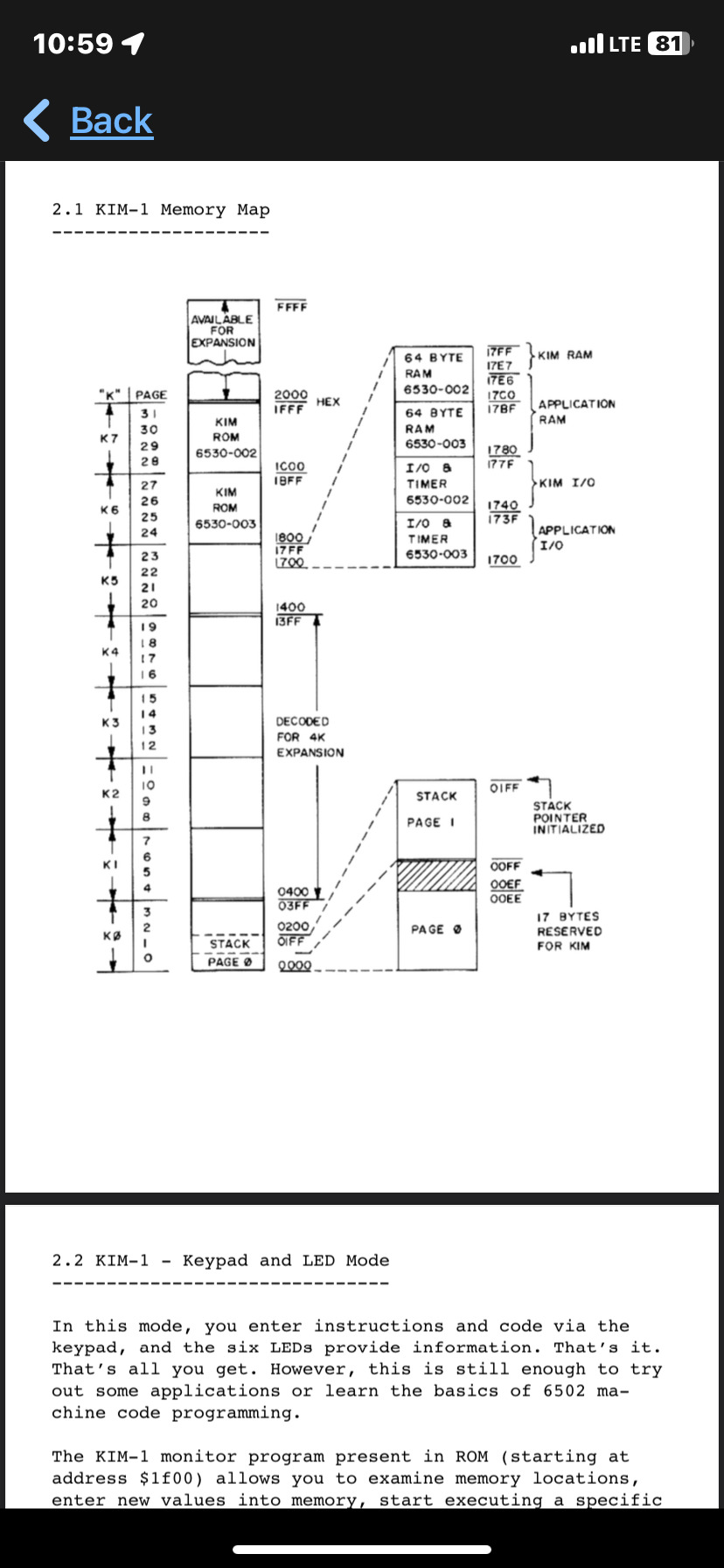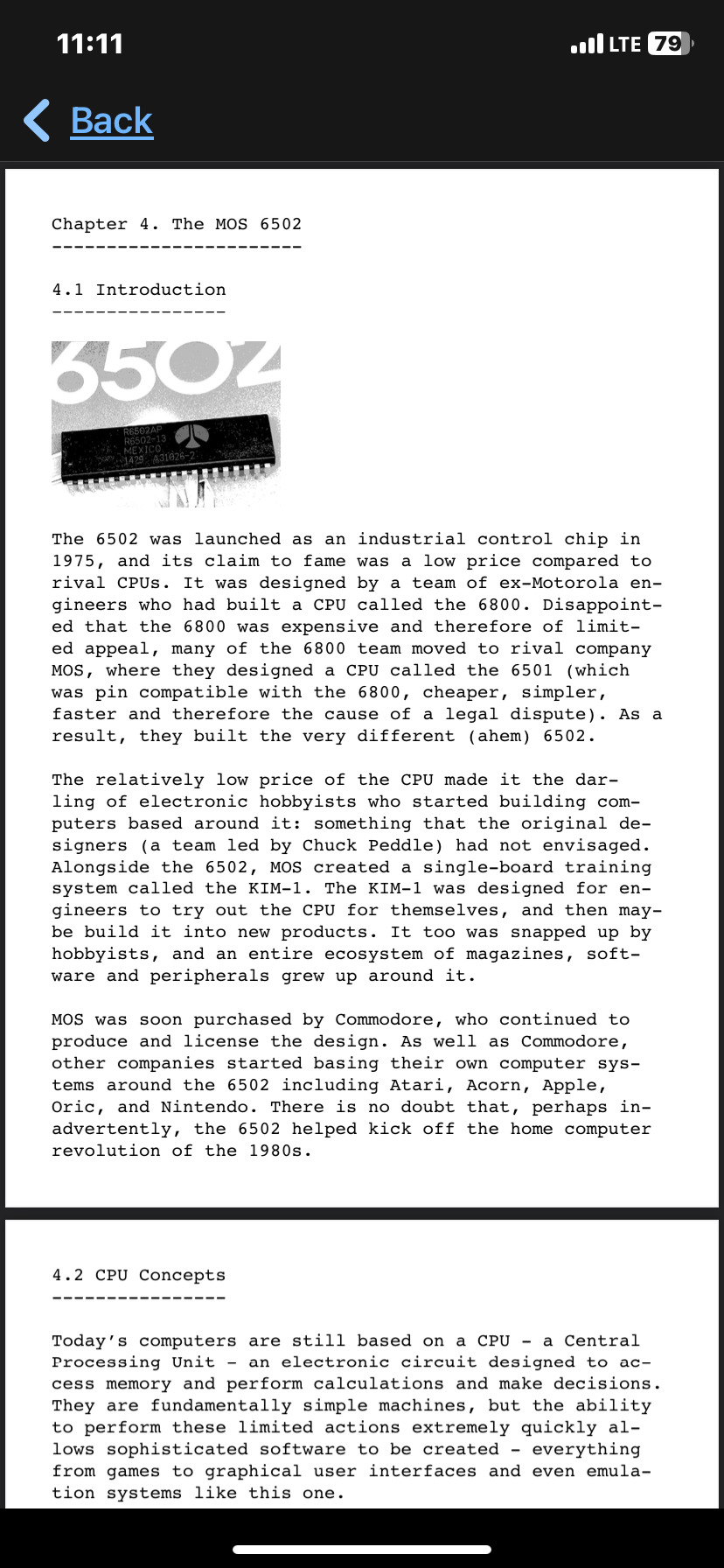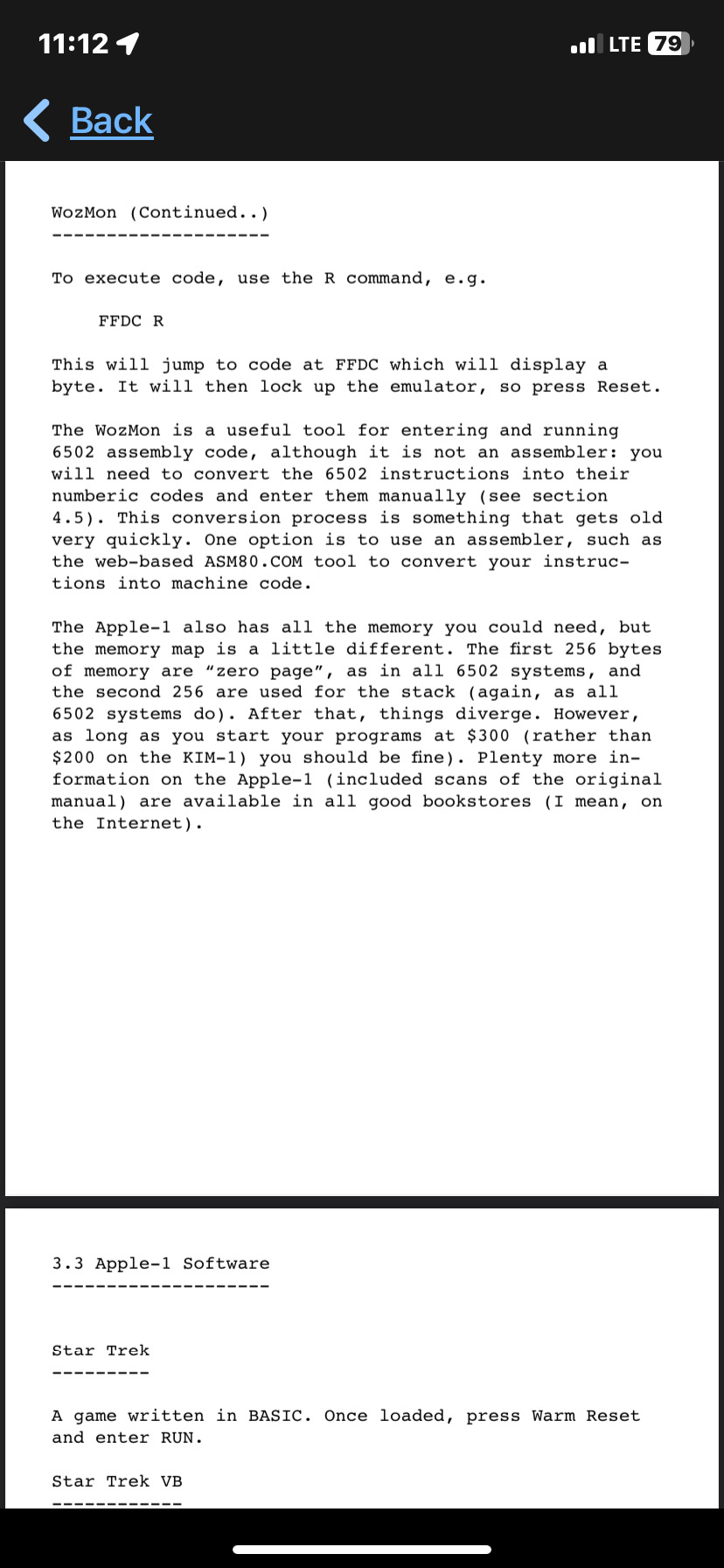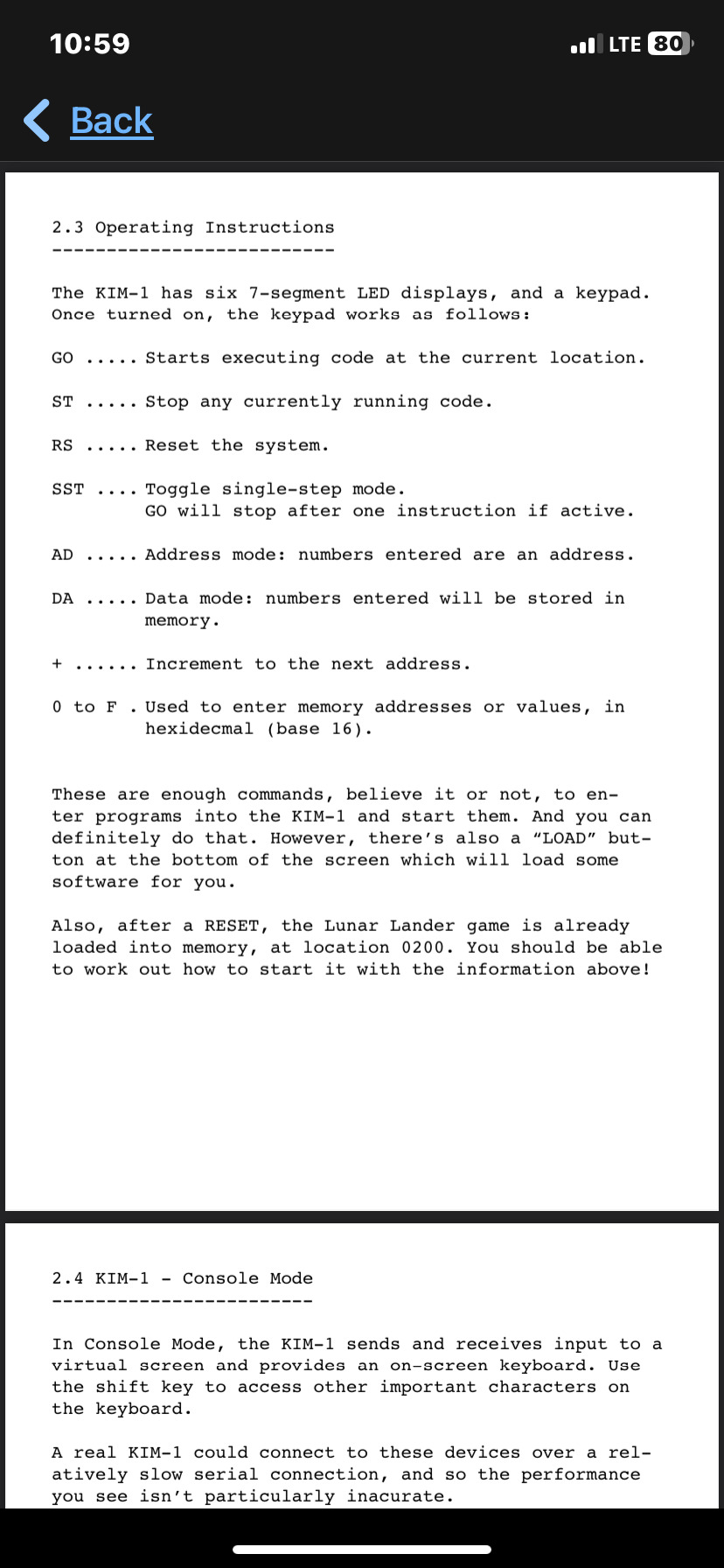#MOS Technology 6502
Explore tagged Tumblr posts
Text


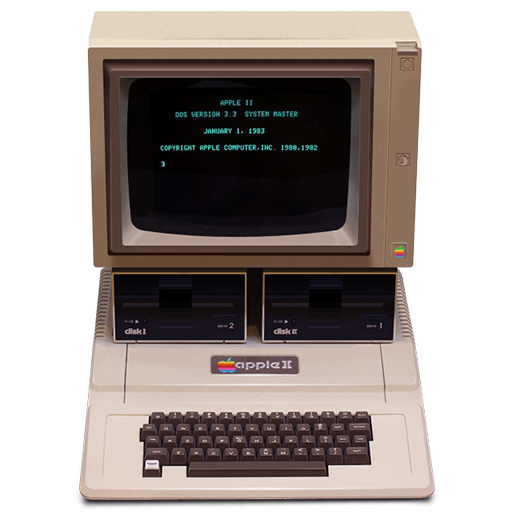


Apple II (June 1977)
The original Apple II was one of the first highly successful personal computers, released by Apple Computer, Inc. (now Apple Inc.) in 1977. It was designed by Steve Wozniak, while Steve Jobs handled the business strategy. The Apple II played a pivotal role in launching the personal computing revolution.
Key Features:
Release Year: 1977
Processor: MOS Technology 6502 at 1 MHz
RAM: 4 KB, expandable up to 48 KB
Storage: Initially used cassette tapes; later supported 5.25" floppy disks (Disk II)
Graphics: Color graphics support — one of the first home computers to offer it
Display: 24 lines × 40 characters text or low-res color graphics (40×48 pixels, 16 colors)
Keyboard: Built-in QWERTY keyboard (initially no lowercase support)
Expansion: 8 internal slots for add-on cards (e.g., sound, memory, network)
Innovations and Impact:
One of the first PCs sold fully assembled in a case with a keyboard and video output — no need for DIY assembly.
Its color graphics and sound capabilities made it popular for games and multimedia software.
Widely adopted in U.S. schools during the 1980s for educational purposes.
Supported BASIC programming, business software, and early video games.
Legacy: The Apple II series (including the II Plus, IIe, IIc, and IIGS) remained in production into the early 1990s. Its commercial success was crucial for Apple's growth and helped pave the way for the Macintosh.
The Apple II is still considered a milestone in computing history, and it is admired for its innovation, accessibility, and influence on the PC industry.
#apple#apple ii#retro computing#retrocomputing#retro gaming#retrogaming#steve jobs#steve wozniak#mos 6502#computer#vintage computer#technology#tech#retro tech#vintage computing#computer history
22 notes
·
View notes
Photo
I wish I had the money (or luck) for a 6501.
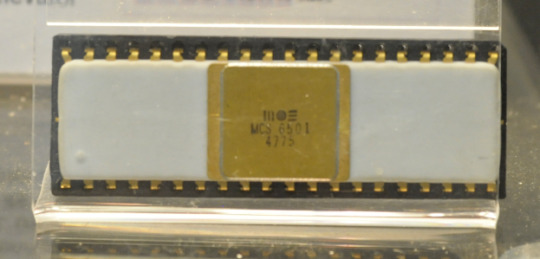
I've seen a 6501 in the VCFed museum before, and I know a guy who knows a guy who owns one, but I've never seen it in person. The two of them tested it in an OSI-400 replica board.
In the even that I ever had the opportunity to give one a test drive, my OSI-400 has been specifically configured for the 6512 which is 97.5% pin compatible with the 6501 and somehow lawsuit-free enough that MOS was able to keep producing them. I have a jumper point that I can change to allow a 6501 to (hopefully) work within that setup.
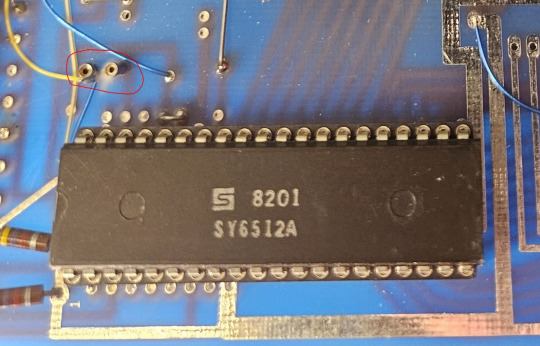
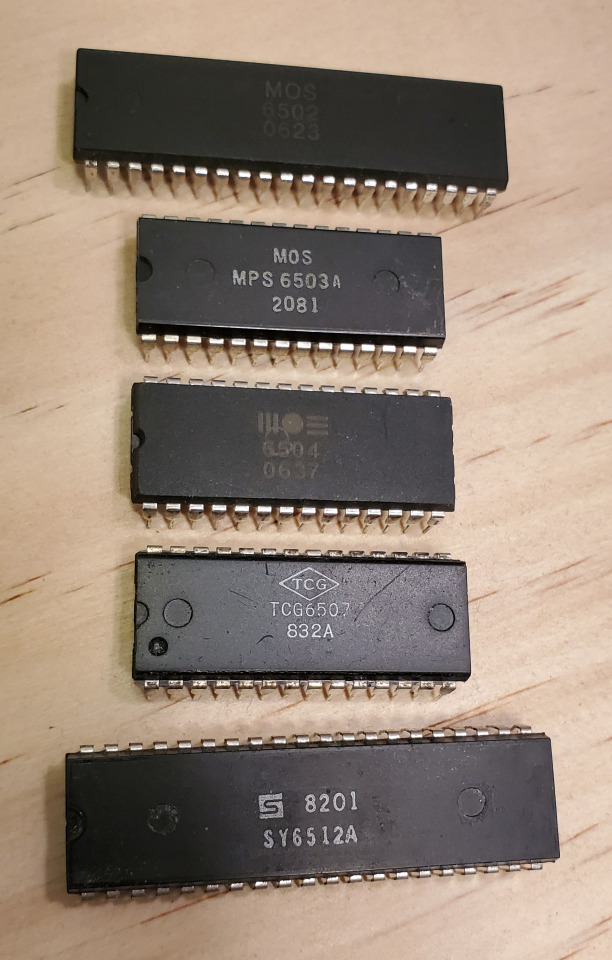
Odd 6502 family processors:
6502 - the flagship chip 6503 6504 6507 6512
158 notes
·
View notes
Text







🎄💾🗓️ Day 8: Retrocomputing Advent Calendar - Commodore PET 🎄💾🗓️
The Commodore PET (Personal Electronic Transactor) came out in 1977 and was among the earliest personal computers - featuring an all-in-one design with a keyboard, monochrome monitor, and cassette deck - all within a single chassis. Powered by an MOS Technology 6502 microprocessor running at 1 MHz, it had 4 KB of RAM and was expandable up to 96 KB in later models. The PET had Commodore BASIC stored in ROM, allowing users to write and execute programs directly. Its display supported text resolutions of 40×25 or 80×25 characters, using the PETSCII character set for semigraphic capabilities. While early models did not have sound, later versions included a basic beeper. PET's all-in-one design and user-friendly interface contributed to its popularity in education and business, and it sold approximately 219,000 units before its discontinuation in 1982.
Check out the wikipedia page for some extended history and great photos -
Have first computer memories? Post’em up in the comments, or post yours on socialz’ and tag them #firstcomputer #retrocomputing – See you back here tomorrow!
#retrocomputing#commodorepet#adventcalendar#vintagecomputers#personalcomputing#techhistory#1977tech#earlycomputers#commodore6502#petscii#computermuseum#technostalgia#oldschooltech#computingpioneers#classiccomputers#80scomputers#historyoftechnology#microcomputers#cassettedeck#basicprogramming#educationtech#businesscomputing#earlypcdesign#retrodesign#geekculture#nostalgiatech#techofthepast#vintagetech#allinonedesign
259 notes
·
View notes
Text

Commodore 2001 series The Commodore PET is a line of personal computers produced starting in 1977 by Commodore International. A single all-in-one case combines a MOS Technology 6502 microprocessor, Commodore BASIC in read-only memory, keyboard, monochrome monitor, and, in early models, a cassette deck.
Source: Wikipedia
#retrotech#s#retrocomputing#retrocomputer#retropc#retro#vintagecomputing#retrotechnology#vintagecomputer#vintagetech#vintagepc#oldcomputer#retrogaming#oldcomputers#computer#computinghistory#vintage#technology#retrogamer#computers#vintagetechnology#oldtechnology#vintagehardware#nostalgia#retrocomputers#oldtech#retrohardware#bit
305 notes
·
View notes
Text

Robodroid (1984), The Robot Factory Inc., Cascade, CO. "Robodroid is a self-contained robot for the experimentalist, hobbyist, and educator. Robodroid's sensory inputs include three sonar transducers on a rotating head, a head position sensor, and two wheel odometers with several options available. Its controlled outputs include two drive motors, a head motor, a sound/music synthesiser and a speech synthesiser with several options planned for the future. Its microprocessor is a MOS Technology 6502. Its memory consists of 64 Kbytes programmable memory and 28 Kbytes read only memory. Its I/O system includes a full upper/lower case keyboard with function keys and eight I/O ports. The interface is an RS/232 with several options. The standard software is Robot Extended BASIC, English text-to-speech conversion and a joystick control program." – THE ROBOT FACTORY.
21 notes
·
View notes
Text
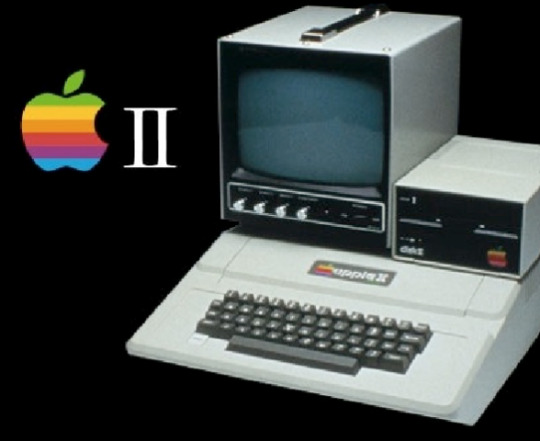
The Apple II is an early personal computer that was created by Apple Inc. It was one of the first successful mass-produced microcomputer products, and it played a significant role in the early development of the personal computer industry. It has an 8-bit microprocessor.
Manufacturer: Apple
Date introduced: June 1977
Developer: Steve Wozniak (lead designer)
Memory: 4, 8, 12, 16, 20, 24, 32, 36, 48, or 64 KiB
Year: 1977 si.edu
CPU: MOS Technology 6502; @ 1.023 MHz
Discontinued: May 1979; 44 years ago
#appleii#apple#1977#steve woznik#as old as my husband#computer#personal computer#8bit#8 bit#microprocessor#vintage#cool
4 notes
·
View notes
Note
i like your name
Thank you so much!! It’s a reference to two things - “Europa” is a reference to the song “Europa and the Pirate Twins” by Thomas Dolby, and the “6502” is a reference to the MOS Technology 6502 microprocessor <3
I like your name too :)
5 notes
·
View notes
Text
Efemerides tecnológica: 31 de mayo de 1976

¡El MOS Technology KIM-1 (1976) fue la pequeña gran máquina que democratizó la computación! 💻 Basado en el 6502, este kit accesible fue la puerta de entrada para miles de programadores y sentó las bases de la era de las PCs. #retrocomputingmx #Kim1 #MOS6502 #efeméridestecnologica https://retrocomputingmx.com/tdxk
0 notes
Text
Zoomposium with Prof. Dr. Konrad Kording: "How do machines think?"

Information about the person
In another episode of our "Zoomposium series" on the topic of "#AI research", my colleague Axel Stöcker from the "Blog der großen Fragen" and I had the opportunity to interview the well-known and renowned German physicist and neuroscientist Prof. Dr. Konrad Körding.
I got to know Konrad, who is also known as Konrad Kording in English-speaking countries, through a correspondence on a social media platform. I was already familiar with his name in connection with one of our last Zoomposium interviews with Patrick Krauß, as he also mentioned Konrad's often-cited article "Could a Neuroscientist Understand a Microprocessor?" (2017) was mentioned.
In this well-known article, he developed an information technology experiment together with Eric Jonas. This involved running old Atari games such as "Donkey Kong" and "Space Invaders" on a very simple, old MOS 6502 processor (3510 transistors), which was used in the Apple I or Commodore 64, for example. The dynamic processes of this "very simple, artificial organism" were then analyzed using neuroscientific methods in order to obtain information about what is actually "happening" - in the truest sense of the word - in its "logic gate network".
One result was: "A real understanding of even these comparatively simple human-made systems therefore remains elusive, and sometimes they even surprise us with genuinely surprising properties [70]. The brain is clearly much more complicated, and our difficulties in understanding deep learning may suggest that the brain is hard to understand when it applies something like gradient descent to a cost function." (https://journals.plos.org/ploscompbiol/article?id=10.1371/journal.pcbi.1005268, emphasisadded)
This exciting topic on "How do machines think?" was one more reason for me to ask Konrad for an interview on the possible "cognitive processes on machines", which he kindly complied with.
More about this: https://philosophies.de/index.php/2024/01/25/wie-denken-maschinen/ or: https://youtu.be/lLHg9fk3Zdw
#konrad kording#artificial consciousness#artificial intelligence#ai#neuroscience#brain research#cognition
2 notes
·
View notes
Text
VIRTUALKIM Simulation
Retro Computing | Learn Machine Code
#planetcamtron #directreference #cre8tivspaces #playncre8te #8-bitgaming
#platformandlayout
1 note
·
View note
Text







Franklin ACE 1000 (1982)
The Franklin ACE 1000 was an early Apple II Plus clone introduced in 1982 by Franklin Computer Corporation. Designed to offer a more affordable alternative to Apple's offerings, it closely mirrored the Apple II Plus in both hardware and software, including direct copies of Apple's ROMs and operating system. This compatibility allowed the ACE 1000 to run most Apple II software and utilize similar expansion cards.
Key Features:
Processor: MOS Technology 6502 at 1.0 MHz
Memory: 64 KB RAM
Display: Monochrome output by default; optional color support via an add-on chip
Keyboard: Full upper/lowercase support with auto-repeat functionality
Expansion: 8 internal slots for peripheral cards
Storage: External 143K 5.25" floppy disk drive available
Operating System: Shipped with Franklin DOS, a modified version of Apple DOS 3.3
Despite its technical merits, the ACE 1000 became the center of a landmark legal case when Apple sued Franklin for copyright infringement. The case, Apple Computer, Inc. v. Franklin Computer Corp., resulted in a ruling that affirmed the copyrightability of software stored in ROM, setting a significant legal precedent in the software industry.
While the ACE 1000 offered features like a numeric keypad and lowercase text support—enhancements over the original Apple II Plus—it was bulkier and heavier. Today, the Franklin ACE 1000 is considered a collector's item, valued for its role in early personal computing history and the legal battles that shaped software copyright law.
On a side note, the Franklin Ace 1000 made several appearances in popular films. It was seen in the Ghostbusters’ lab in the original 1984 Ghostbusters. You can also see a poster for an ACE 1000 in the background of 1984’s Triumph of the Nerds.
more info: https://computeradsfromthepast.substack.com/p/franklins-ace-1000
https://oldcomputers.net/ace1000.html
#apple ii#apple#franklin ace#franklin ace 1000#MOS 6502#retrogaming#8bit#industrial design#retro gaming#80s#retro#retro computing#apple clone#vintage computing#vintage computer#vintage#retro tech#tech#technology#old tech#ghostbusters
9 notes
·
View notes
Text
Diseña LuisMi. Temp 1 Cap1

Aprendamos Sobre el Diseño Digital.
Para comprender el diseño digital, es de vital importancia ver los primeros avances en la tecnología, ver de donde surgió cada elemento tecnológico que hoy en día son de uso común en nuestro cotidiano existir.
En nuestra primera imagen podemos ver una computadora industrial de los años 60. Se puede apreciar como las máquinas de antes harán más mecánicas en lo que a sus procesos se refiere, además que se tenía que tener grandes espacios para poder construirlas, tanto así que, una computadora era una simple maquina que mandaba y recibía información menos de un"bytes". Eran máquinas del tamaño de un salón de universidad, que se encargan de procesarsistemas binarios y duraban horas para el proceso de cálculos. Requerían de mucha atenciónde parte de los científicos que los tenían en observación. Se utilizaban para descifrar o calcular o identificar alguna información que se requería en forma de mensajes.
youtube
Para tener un poco más de información, podemos apreciar el anterior video, realmente nos muestra de una forma divertida y con mucha información, como fue que se construyó ña primera maquina de procesamiento la Z1 diseñado por el Ing. Alemán Conrat, el cual diseño la Z1 en base a procesos matemáticos, los cuales repitiendo varias veces el proceso, nos dejaba un resultado de investigación.
Inicios de las computadoras personales Cap2
Luego de la creación de las primeras máquinas de procesamiento, en los años 70 en la época hippies, el pensamiento liberalista, creo una revolución constante en como se veía el mundo hasta ese momento, un mundo lleno de creatividad y romper las barreras sobrepuestas era pensamiento base para una gran revolución, en este caso en las máquinas de procesamiento.
HABLEMOS DE APPLE
Apple fue fundada el 1 de abril de 1976 por Steve Jobs, Steve Wozniak, y Ronald Wayne en el garaje de la casa de Jobs en Cupertino, California. La idea principal detrás de la empresa era crear computadoras personales accesibles y fáciles de usar. Wozniak diseñó el primer producto, el Apple I, que era una computadora básica sin teclado ni monitor, pero que representaba un gran avance en comparación con otros dispositivos de la época.
La creación de la primera computadora personal de Apple, el Apple I, fue una tarea compleja que involucró varios componentes innovadores para la época. Aquí te detallo cómo se desarrollaron algunos de los componentes clave:
1. Placa base (Motherboard): Steve Wozniak, el ingeniero detrás del Apple I, diseñó y construyó la placa base. A diferencia de otras computadoras de la época que venían en forma de kits para ensamblar, el Apple I se vendía con la placa base ya montada. Esto facilitó su uso por personas sin conocimientos técnicos avanzados.
2. Procesador: El Apple I utilizaba el microprocesador MOS Technology 6502, que era muy económico en comparación con otros procesadores de la época. Este chip de 8 bits fue clave para reducir los costos de la máquina, lo que permitió a Apple ofrecer una computadora personal a un precio más accesible.
3. Memoria: La memoria RAM del Apple I era de 4 KB, pero podía expandirse hasta 8 KB o incluso 48 KB con tarjetas adicionales. La RAM se utilizaba para almacenar temporalmente datos y programas en ejecución, una característica crucial para cualquier computadora.
4. Interfaz de entrada y salida: Aunque el Apple I no venía con un teclado o monitor incorporado, sí incluía un puerto para conectar un teclado, permitiendo a los usuarios interactuar con la máquina. Para la salida, se utilizaba una señal de vídeo que podía conectarse a un televisor. Esto era revolucionario, ya que la mayoría de las computadoras en ese momento requerían monitores especializados.
5. Almacenamiento: El Apple I no incluía un dispositivo de almacenamiento permanente, como un disco duro o una disquetera. Los programas y datos se cargaban en la memoria RAM utilizando cintas de casete a través de un adaptador de cassette opcional. Este método de almacenamiento era común en los primeros días de la computación personal.
6. Fuente de alimentación: La fuente de alimentación para el Apple I no venía incluida en el paquete; los usuarios debían adquirir una fuente de alimentación separada. Wozniak diseñó el Apple I para funcionar con una fuente de 5V que pudiera alimentar la placa base y los periféricos.
7. Software: El Apple I no tenía un sistema operativo sofisticado como los que conocemos hoy. En cambio, los programas se cargaban directamente en la memoria mediante código máquina o BASIC (un lenguaje de programación sencillo). Wozniak también escribió un intérprete de BASIC específicamente para el Apple I, lo que permitía a los usuarios escribir y ejecutar programas de manera más sencilla.
8. Carcasa: Originalmente, el Apple I no venía con una carcasa. Los primeros usuarios, incluyendo aquellos que lo adquirieron en la tienda Byte Shop, a menudo construían sus propias cajas para albergar la placa base y los componentes adicionales. Más tarde, se fabricaron algunas carcasas de madera a medida para darle un aspecto más acabado.Estos componentes, aunque rudimentarios en comparación con los estándares actuales, fueron pioneros en su tiempo.
La combinación de un diseño accesible, un precio relativamente bajo y la visión de Steve Jobs y Steve Wozniak hicieron del Apple I un producto revolucionario que sentó las bases para la evolución de las computadoras personales.
Steve Jobs y Wozniak son un punto clave para el diseño digital de hoy en día, la revolución con la Apple 1 y más adelante lo que veremos cómo pasamos de interfases más mecanicas y complejas a más amigables y que podían ser utilizadas por casi cualquier persona. Todo lo anterior visto nos dará una perspectiva y base de como inicio el diseño en su propio camino.
1 note
·
View note
Text







🎄💾🗓️ Day 14: Retrocomputing Advent Calendar - Atari 400/800🎄💾🗓️
The Atari 8-bit computer line was launched in 1979 with the Atari 400 and Atari 800. Both were advanced for home computers at the time. Both were driven by a 1.79 MHz MOS Technology 6502 CPU, with ANTIC and CTIA/GTIA custom chips for advanced graphics and the POKEY chip handling sound and input/output duties. The Atari 800 was the premium model, featuring a full mechanical keyboard, user-expandable to 48 KB of memory, more metal shielding, and more durability. The Atari 400 was a lower-cost alternative with a membrane keyboard, limited to 16 KB of RAM, and a simplified construction.
With hardware-accelerated scrolling, Player/Missile graphics, and rich sound, the Atari 8-bit systems were known for gaming and creative applications. They were a versatile platform with cartridge-based software, cassette, and floppy disk storage. Atari's proprietary SIO (Serial Input/Output) port allowed daisy-chaining peripherals such as printers, modems, and disk drives, making connecting them easier than with other systems.
Newer models were more compact, combined memory expansion to as much as 128KB, and compatibility with developing software and peripherals improved. Atari's 8-bit computers are remembered for having groundbreaking hardware and a very colorful game library, and they are still being used by the retrocomputing community.
While doing research for this, I saw the XE Game System, never saw it before, very 80s for sure!
The Atari XEGS (XE Game System) was launched in 1987. A repackaged 65XE with a removable keyboard, it boots to the 1981 port of Missile Command instead of BASIC if the keyboard is disconnected.
Have first computer memories? Post’em up in the comments, or post yours on socialz’ and tag them #firstcomputer #retrocomputing – See you back here tomorrow!
#retrocomputing#atari#atari400#atari800#8bit#vintagecomputer#classiccomputing#retrogaming#computerhistory#1970s#homecomputer#technology#electronics#gaming#6502#mos6502#antic#ctia#gtia#pokey#firstcomputer#retro#oldcomputer#vintagegaming#hardware
72 notes
·
View notes
Text
Escribiendo en español cada día del año (EEECDDA)
Día 86, el 26 de marzo: sobre el 6502
El 6502 por MOS Technologies es un microprocesador que lanzó en 1975. El 6502 sólo puede calcular con 8 bits y tiene un conjunto de instrucciones muy pequeño. Para el proyecto en mi clase de compiladores, mi grupo y yo vamos a programar un compilador para traducir código en C a código para el 6502. Tendremos que usar una versión de C mucho más sencillo que el C normal porque el 6502 no puede trabajar con números de coma flotante.
0 notes
Text





The MOS Technology 6502 8-bit microprocessor, introduced in 1975. A workhorse of 1980s home computing, it and its variants powered the Apple I, Apple II, Apple II+, Apple IIe, Atari 2600, Atari 5200, Atari 7800, Atari 800, Atari Lynx hand-held, BBC Micro and Master, Commodore PET, Commodore VIC-20, Commodore 64, Commodore 128, Famicom, Nintendo Entertainment System, and TurboGrafx-16, among others. Initially clocking in at 1.023 Mhz, some variants could reach up to 4 Mhz.
The 65xx series lives on through variants of the improved low-power WDC 65C02 CMOS version, first released in 1983. Hundreds of millions of units are still being produced annually; in particular, the W65C02S–14 variant can exceed a blistering 14 MHz, and continues to see use in a wide variety of embedded devices ranging from automotive and industrial applications to medical implants.
1 note
·
View note




